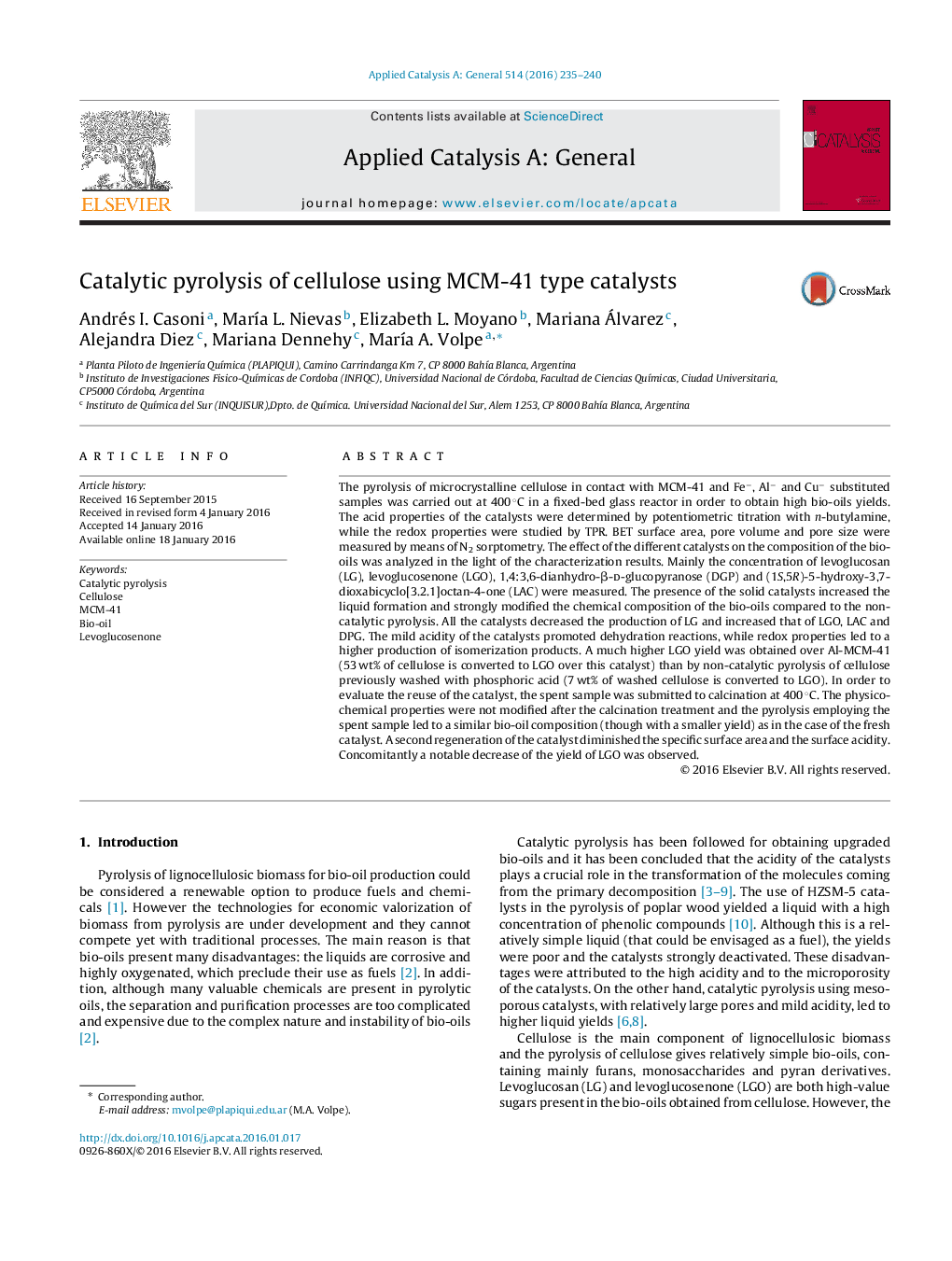| کد مقاله | کد نشریه | سال انتشار | مقاله انگلیسی | نسخه تمام متن |
|---|---|---|---|---|
| 38959 | 45798 | 2016 | 6 صفحه PDF | دانلود رایگان |

• High anhydrosugars yields are obtained from pyrolysis of cellulose employing MCM-41.
• Al-MCM-41 catalysts improves production of levoglucosenone.
• Mild acidity and redox sites are involved produce different anhydrosugars.
• Solid catalyst could be used to improve LGO yield pyrolysis of cellulose.
The pyrolysis of microcrystalline cellulose in contact with MCM-41 and Fe−, Al− and Cu− substituted samples was carried out at 400 °C in a fixed-bed glass reactor in order to obtain high bio-oils yields. The acid properties of the catalysts were determined by potentiometric titration with n-butylamine, while the redox properties were studied by TPR. BET surface area, pore volume and pore size were measured by means of N2 sorptometry. The effect of the different catalysts on the composition of the bio-oils was analyzed in the light of the characterization results. Mainly the concentration of levoglucosan (LG), levoglucosenone (LGO), 1,4:3,6-dianhydro-β-d-glucopyranose (DGP) and (1S,5R)-5-hydroxy-3,7-dioxabicyclo[3.2.1]octan-4-one (LAC) were measured. The presence of the solid catalysts increased the liquid formation and strongly modified the chemical composition of the bio-oils compared to the non-catalytic pyrolysis. All the catalysts decreased the production of LG and increased that of LGO, LAC and DPG. The mild acidity of the catalysts promoted dehydration reactions, while redox properties led to a higher production of isomerization products. A much higher LGO yield was obtained over Al-MCM-41 (53 wt% of cellulose is converted to LGO over this catalyst) than by non-catalytic pyrolysis of cellulose previously washed with phosphoric acid (7 wt% of washed cellulose is converted to LGO). In order to evaluate the reuse of the catalyst, the spent sample was submitted to calcination at 400 °C. The physicochemical properties were not modified after the calcination treatment and the pyrolysis employing the spent sample led to a similar bio-oil composition (though with a smaller yield) as in the case of the fresh catalyst. A second regeneration of the catalyst diminished the specific surface area and the surface acidity. Concomitantly a notable decrease of the yield of LGO was observed.
Figure optionsDownload high-quality image (132 K)Download as PowerPoint slide
Journal: Applied Catalysis A: General - Volume 514, 25 March 2016, Pages 235–240